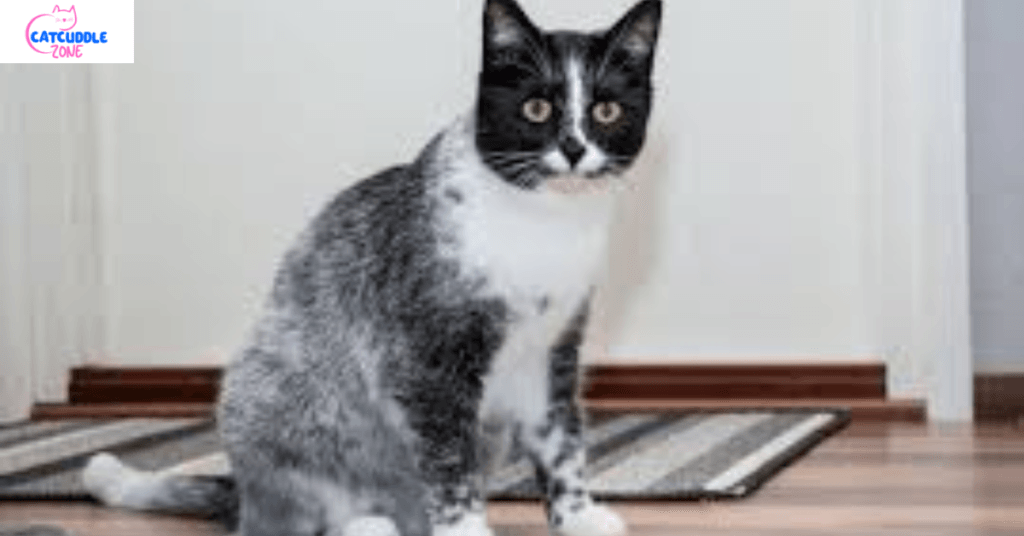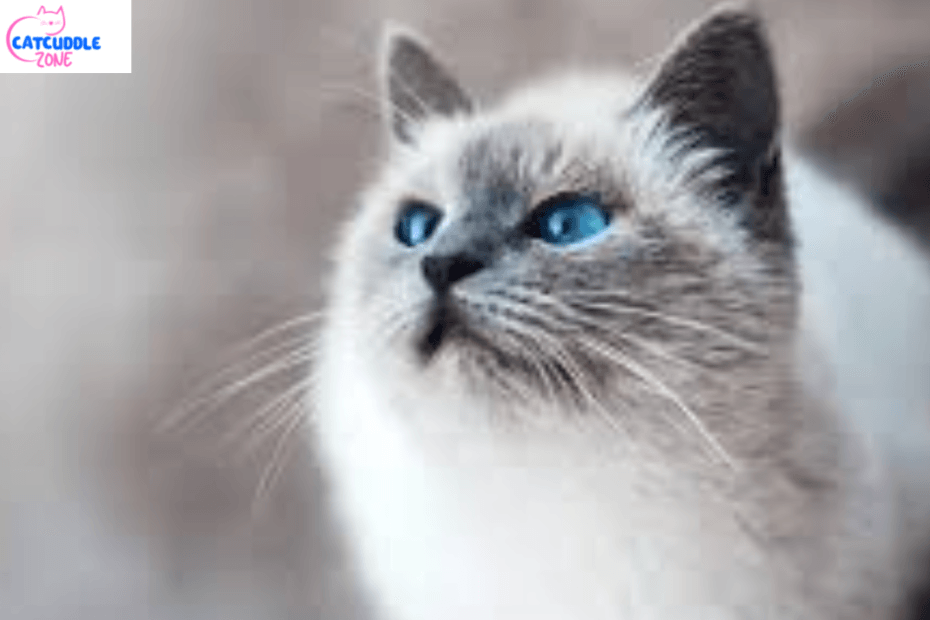Have you ever seen a cat that looks like it was dusted with snow? Meet the Salty Licorice cat, a stunning feline marvel with a truly one-of-a-kind appearance. This isn’t your average house cat; it’s a captivating genetic anomaly known for its spectacular ombre fur.
Originating from Finland, this rare cat boasts a dark base coat that magically gradients to white at the tips, creating a sparkling, “salted” effect. Its unique look, named after a popular Scandinavian candy, has fascinated cat enthusiasts and genetic researchers worldwide, making it a beautiful mystery of the feline world.
What is a Salty Licorice Cat?
Think of a tuxedo cat variant that has been sprinkled with snow. The Salty Licorice cat is famous for its unique fur pattern. This pattern gives it an ombre fur effect that is both beautiful and strange. The term describes the cat’s special coat color, not its personality or breed. It is a natural and very rare phenotype that makes this cat stand out from all others.
These cats are sometimes called Salmiak cats after a popular candy in their home country. They are a wonder of nature that has caught the eye of cat lovers and scientists. Understanding this cat helps us appreciate the amazing diversity found in feline pigmentation. Their look is a fantastic genetic surprise.
Is the Salty Licorice Cat a New Official Breed?
No, it is very important to know this. The Salty Licorice cat is not a new cat breed. Big cat clubs like The International Cat Association do not recognize it as a official breed. This is a key point for people who love cats. These cats are defined only by their beautiful and rare coat color.
They are what experts call a landrace variety. This means they developed naturally in one specific area. Their looks were not carefully planned by people like a designer cat. So, while they are a very special kind of Finnish cat, they are not a formal breed with a strict standard.
Origin and History: Where Did the Salty Licorice Cat Come From?
The story of this cat starts in the beautiful country of Finland. The first cats with this look were found near the town of Petäjävesi. This happened in the early 2000s. For a long time, they were just a local secret. People in the area knew about these special cats with a frosted coat.
A dedicated breeder named Mia Vesterinen saw these cats and was amazed. She started a careful program to learn more about them and protect their unique look. Her work helped bring the Salty Licorice cat to the world’s attention. It also helped start official genetic research into what causes their stunning appearance.
The Striking Appearance: What Does a Salty Licorice Cat Look Like?
Imagine a black cat with a glossy sheen that seems to be dusted with white powder. That is the Salty Licorice cat. Their most famous feature is their coat. It has a roots black, ends white pattern that creates a frosted coat effect. This white flecking makes each cat look unique and sparkling.
Underneath the dark parts, some cats might have hints of blue or brown. They often have bright green eyes or deep yellow eyes that stand out against their fur. Many have white paws, a white chest, and a white tail tip. This makes them look like a formal black and white cat dressed for a very fancy party.

The Science Behind the Fur: Genetics of the Salty Licorice Pattern
The secret to this cat’s look is all in its genes. Scientists from the University of Helsinki, led by Hannes Lohi, decided to study them. They used genome sequencing to look at the cat’s DNA. They found a very special recessive mutation on the KIT gene. This gene controls how color cells spread through the skin and fur.
This specific change, called the w-sal or salmiak gene variant, causes the unique pigment distribution. It is different from the genes that make a typical white piebald pattern. This discovery was a big deal and was published in the famous Animal Genetics journal. It shows how a small change can create a huge visual effect.
The Recessive Gene Explained
A recessive gene is like a hidden instruction. For the Salty Licorice pattern to show, a kitten must get two copies of this special instruction. It must get one from its mother and one from its father. If it only gets one copy, it will look normal. But it can still carry the hidden instruction and maybe have patterned babies one day. This is why the pattern is so rare.
The Name Explained: Why ‘Salty Licorice’ or ‘Salmiak’?
The name is a fun tribute to Scandinavian candy. Salmiak licorice is a type of salty black licorice treat. It is very popular in Finland and its neighbors. Companies like Galle and Jessen have made this candy for a long time. The candy is dark black and often dusted with salty white powder.
People thought the cat’s dark fur with white tips looked just like this candy. So, the name Salty Licorice cat was born. It is a cute and perfect name that connects the cat to its cultural roots. The name helps everyone remember where this amazing, rare cat comes from.
Important Health and Safety: Can I Give My Cat Actual Licorice?
This is a very important question. The answer is absolutely not. You should never give your cat real licorice. The candy is named after is dangerous for pets. Real black licorice contains a substance called glycyrrhizin. This can cause serious health problems for your cat. It can make their blood pressure too high and cause other issues.
Even worse, sugar-free licorice often contains xylitol. Xylitol is a sweetener that is highly toxic to cats and dogs. It can make them very sick very quickly. Always follow veterinary advice on treats. Your cat’s safe treat options are things like plain cooked chicken or fish. Keep the candy for yourself and just enjoy the cat’s beautiful name.
Acquisition and Cost: Are Salty Licorice Cats Expensive?
Yes, they are incredibly expensive. The main reason is that they are a very rare cat. There are almost none of them outside of Finland. If you wanted to get one, it would be very hard. You would have to work with a breeder in Finland. This means dealing with international travel, special permits, and long quarantine times for the animal.
If one ever became available, the price would be very high. It would likely cost several thousand dollars. This high cost is why many animal lovers promote adopt, don’t shop. There are so many wonderful cats in shelters waiting for a home. Buying a designer cat can also make problems like cat overpopulation worse.
The Future of the Salty Licorice Cat
What happens next for these cats is still unknown. Breeders and scientists want to protect their special gene variant. They are working to make sure these cats are healthy and their line continues. It is a very long and difficult process to become a new official breed. This might never happen.
They will likely always be a rare and wonderful oddity. Most people will only ever see pictures of them. Their greatest legacy might be in science. The discovery of their KIT gene mutation helps us understand all cat genetics better. This knowledge can help with the health of all cats in the future.
The Allure of the Rare
The Salty Licorice cat is a true natural wonder. Its stunning gradient coat is a masterpiece of feline pigmentation. While you probably will not meet one, it is fun to learn about. It reminds us of the amazing variety in the animal world. We can enjoy its beauty from afar and be happy that such a magical-looking cat exists.
(FAQs)
What is a salty licorice cat?
A Salty Licorice cat is a rare feline with a unique gradient coat that appears dark at the roots and fades to white at the tips, named after the popular Scandinavian candy. It is not a formal breed but a striking natural genetic variation.
How many salmiak cats are there?
There are extremely few salmiak cats globally, with most located in Finland. Their population remains very small due to the specific recessive gene required for their distinctive appearance.
What is the rarest color for a cat?
The rarest cat color is true solid chocolate or lavender, often seen in specific breeds like the Havana Brown. However, unique patterns like the salmiak coat are also among the most uncommon.
When was the salty licorice cat discovered?
The Salty Licorice cat was first noticed in the early 2000s in Finland, near the town of Petäjävesi. Genetic research confirming their unique KIT gene mutation was published later in 2023.
What country has salty licorice?
Salty licorice, or salmiakki, is most popular in Finland and other Nordic countries like Sweden and Denmark. It is a beloved candy with a distinctive, sharp, salty flavor.
